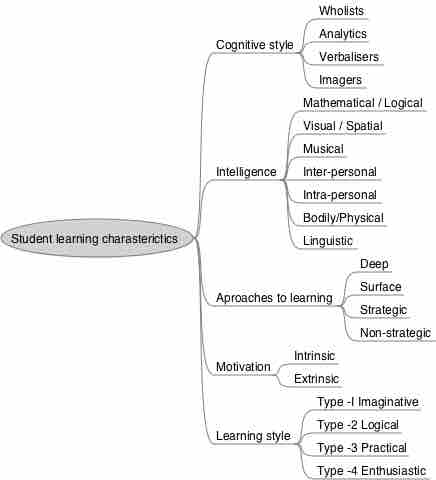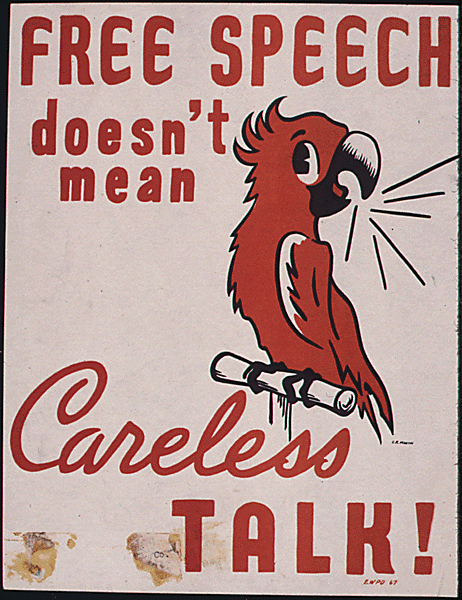Extemporaneous Speech
Extemporaneous speaking is one of the most natural methods for delivering a prepared speech. You can use an extemporaneous speech to achieve a more natural tone, flow and style with the audience.
First, think about your topics and anticipate the audience's reception to your speech. You can develop speech notes based on this preparation and use them to aid you during the presentation.
Preparing Speech Notes
There are two popular methods for creating a graphical representation for notes: outlining, and mind or concept mapping.
An outline is a list of items with each item divided into additional sub-items. Each level in an outline has at least two subcategories. There are three basic types of outlines:
- Sentence outline - Each complete sentence includes a heading or single sentence about the subject of the outline.
- Topic outline - Each topic is listed and functions as a subtopic of the outline's subject.
- Phrase outline - Each short phrase entry is a subtopic of the aforementioned main entry.
Speaking notes, topic outlines, and phrase outlines have an advantage over sentence outlines. For example, you can easily look at your notes for reference and as a personal reminder of which topics to discuss as you're speaking.
Outlines commonly take two forms: alphanumeric and decimal.
An alphanumeric outline includes a capitalized number or letter at the beginning of each topic. Look at the sample:
Thesis statement: E-mail and internet monitoring is an invasion of employees' rights
I. The situation: Over 80% of today's companies monitor their employees.
....A. To prevent fraudulent activities, theft, and other workplace related violations.
....B. To more efficiently monitor employee productivity.
II. What are employees' privacy rights when it comes to electronic monitoring and surveillance?
....A. American employees have basically no legal protection from mean and snooping bosses.
........1. There are no federal or State laws protecting employees.
........2. Employees may assert privacy protection for their own personal effects.
....B. Most managers believe that there is no right to privacy in the workplace.
........1. Workplace communications should be about work; anything else is a misuse of company equipment and company time.
........2. Employers have a right to prevent misuse by monitoring employee communication.
Decimal outline
The decimal outline shows how each item at every level relates to the whole sample.
Thesis statement:
1.0 Introduction
....1.1 Brief history of Liz Claiborne
....1.2 Corporate environment
2.0 Career opportunities
....2.1 Operations management
........2.1.1 Traffic
........2.1.2 International trade and corporate customs
........2.1.3 Distribution
....2.2 Product development
The outline could be printed or handwritten as in this expert from Richard Nixon's Checkers speech.

Notes for the "Checkers Speech" delivered by Richard Nixon
Excerpts from the notes used in delivering the Fund speech (or Checkers speech) on file with the Richard Nixon Presidential Library and Museum
Mind Mapping and Concept Mapping
Mind mapping and concept mapping are visual representations of ideas and concepts. A mind map is a diagram which starts with a single word and then branches out from the central node, with lesser categories as sub-branches of the larger branches. Concept maps are more free-form, since multiple hubs and clusters can be created. Unlike mind maps, concept maps do not fix on a single conceptual center.
For example, in the mind map for student learning , you can view the main component idea and related ideas which connect to its branch nodes. You can also use a mind map as speaking notes.

Mind Map Student Learning Mind Map by By Nevit Dilmen
Practice and Rehearsal Guidelines
The following guidelines are best practices on how to practice and rehearse an extemporaneous speech:
- Speak in a conversational style by pretending you are with your audience.
- Rehearse with your graphics and coordinate them with your talk.
- Display your graphics only when you are talking about them.
- Rehearse in front of others and solicit feedback.
- Record and listen to your timed practice speech.
- Prepare for interruptions and questions at the end.
Although extemporaneous speaking may not require memorization and manuscript speaking, organize and prepare your content and notes ahead of time to deliver a speech that will be well received by your audience .

Free speech doesn't mean careless talk!, ca. 1942 - ca. 1943
Free speech doesn't mean careless talk! produced by Office for Emergency Management. War Production Board. (01/1942 - 11/03/1945)